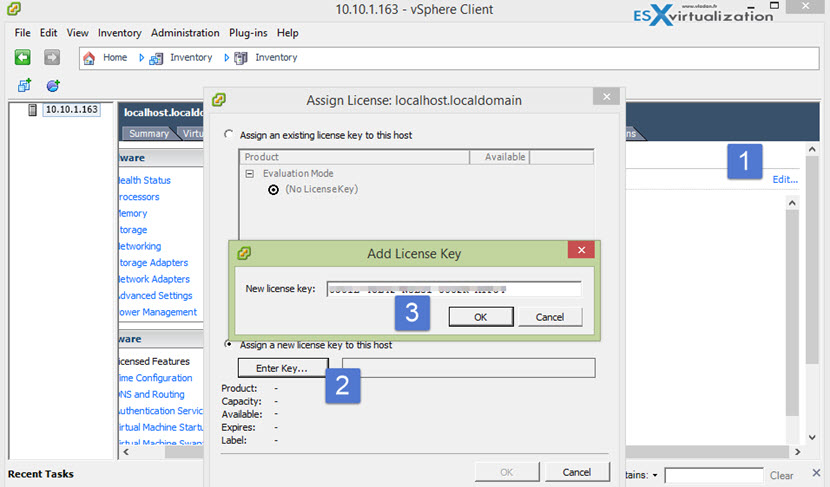


In the event of a hardware error, the vmkernel can catch a Machine Check Exception. The Service Console, for all intents and purposes, is the operating system used to interact with VMware ESX and the virtual machines that run on the server.Ī purple diagnostic screen from VMware ESXi 4.1 Both of these Console Operating System functions are being deprecated from version 5.0, as VMware migrates exclusively to the ESXi model. In ESX (and not ESXi), the Service Console is a vestigial general purpose operating system most significantly used as bootstrap for the VMware kernel, vmkernel, and secondarily used as a management interface. has changed the module-loading and some other minor things. Programmers have adapted them to run with the vmkernel: VMware Inc.
DOWNLOAD VMWARE VSPHERE 5.5 CLIENT DRIVERS
These drivers mostly equate to those described in VMware's hardware compatibility list. According to the README file, "This module contains the Linux emulation layer used by the vmkernel." To access these modules, an additional module called vmklinux implements the Linux module interface.

At least some of the modules derive from modules used in the Linux kernel. Īccess to other hardware (such as network or storage devices) takes place using modules. The vmkernel handles CPU and memory directly, using scan-before-execution (SBE) to handle special or privileged CPU instructions Īnd the SRAT (system resource allocation table) to track allocated memory. The vmkernel is a microkernel with three interfaces: hardware, guest systems, and the service console (Console OS). VMware dropped development of ESX at version 4.1, and now uses ESXi, which does not include a Linux kernel at all. At normal run-time, the vmkernel was running on the bare computer, and the Linux-based service console ran as the first virtual machine. The Linux kernel was the primary virtual machine it was invoked by the service console. In the historic VMware ESX, a Linux kernel was started first and then used to load a variety of specialized virtualization components, including ESX, which is otherwise known as the vmkernel component. ĮSX runs on bare metal (without running an operating system) unlike other VMware products. In September 2004, the replacement for ESX was internally called VMvisor, but later changed to ESXi (as the "i" in ESXi stood for "integrated"). The name ESX originated as an abbreviation of Elastic Sky X.
DOWNLOAD VMWARE VSPHERE 5.5 CLIENT SOFTWARE
ESX/ESXi is the primary component in the VMware Infrastructure software suite. ESXi replaces Service Console (a rudimentary operating system) with a more closely integrated OS. Īfter version 4.1 (released in 2010), VMware renamed ESX to ESXi. As a type-1 hypervisor, ESXi is not a software application that is installed on an operating system (OS) instead, it includes and integrates vital OS components, such as a kernel. VMware ESXi (formerly ESX) is an enterprise-class, type-1 hypervisor developed by VMware for deploying and serving virtual computers.


 0 kommentar(er)
0 kommentar(er)
